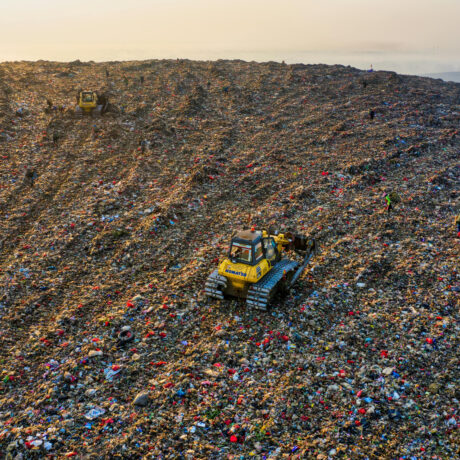Paper vs Plastic Hangers: the effect on the retail industry
Nexgen Packaging, founded in 2006 and headquartered in Westmont, Illinois, is a leading provider of packaging solutions for the retail and apparel industries. Their focus on sustainability and investment in local production capabilities has helped them establish a significant global footprint, operating in 19 countries. They leverage industry expertise and advanced technology to ensure high-quality and consistent products for their customers.
Recently, Nextgen Packaging published a white paper on plastic pollution and its impact on the retail industry. Specifically, the paper examines the environmental benefits of transitioning from plastic to paper hangers. It addresses various aspects of business, retail, supply chain requirements, and sustainability. To mark Plastic Free July, Sophie Lundmark explores the findings of the white paper and what it means for the fashion industry.
The Problem at Hand
The retail industry must reduce its plastic consumption, with hangers being a significant contributor. Should retailers and brands adopt sustainable hangers? And why is it crucial to switch from plastic to paper?
Consumer Appeal
Consumers increasingly support sustainable and environmentally friendly companies. Transitioning from plastic to paper products demonstrates a retailer’s commitment to addressing the broader sustainability problem the world faces. As hangers are numerous and very visible in store platforms, the materials used to make hangers should be a serious consideration.
Stakeholder Interest
Recent studies have shown that investors want to put more money into sustainable companies. Companies that are willing to put effort into their ESG (Environmental, Social, Governance) strategies are more appealing to consumers and more likely to increase their investor engagement. Retailer commitment has helped push this forward, as many are addressing how to combat and reduce plastic.
Government Legislation
Government regulations on single-use plastic are on the rise globally. Many countries are instituting bans and restrictions on plastic production and sales, including hangers. While the US has fewer restrictive plastic laws, some states, such as California, Hawaii, Maine, New York, and Delaware, are starting to regulate single-use plastics. This trend is important to monitor, as it can affect where and how products are manufactured and used.
Single-Use Plastic
Single-use plastics, intended for one-time use, contribute significantly to environmental pollution. They include items like bags, straws, packaging, bottles, and hangers. The production of plastic involves drilling, extracting, and processing toxic non-renewable resources, emitting greenhouse gases, and causing environmental degradation. After use, plastic hangers can take up to 500 years to degrade in landfills, leaking harmful substances throughout their lifecycle, such as benzene and bisphenyl-a. This can be mitigated by transitioning to paper hangers.
Recycled Plastic
Recycled plastic can be seen as a step up from single-use, virgin plastic hangers. By using recycled materials, manufacturers and retailers can reduce the demand for virgin plastic, lessening the environmental impact. Companies can facilitate this by placing plastic waste collection bins in strategic locations and raising consumer awareness about recycling.
However, recycled plastics still have negative impacts. They are difficult to recycle again due to complex compounds and may contain harmful catalysts and chemicals. These factors should be considered when deciding between plastic and paper.
Alternatives Materials
1. Paper
Paper fiberboard hangers, made from certified wood and/or post-consumer waste, eliminate much of the pollution associated with plastic production. They are lighter and thinner than plastic hangers, allowing more apparel to fit in a single shipment, and reducing greenhouse gas emissions from transportation. Paper hangers can be recycled, biodegraded, or composted, creating a closed-loop system. A natural recyclable paper hanger reduces pollution and effects associated with plastic. They can also be used for branding or advertising with eco-friendly vegetable ink, a benefit no other material has.
2. Wood
Wooden hangers are typically made from renewable trees like oak, maple, walnut, cedar, or bamboo. They undergo an extensive chemical process involving preservatives, stains, sealants, and finishes, and can have metal accessories making the disposal difficult, if not impossible. Although better than plastic, wooden hangers are not as ideal as paper hangers.
3. Metal
Metal hangers, often made from low-grade pot metal, have significant environmental impacts such as habitat destruction and biodiversity loss due to the metal extraction. They, too, undergo processing with toxic paints and varnishes. Recycling centers frequently reject metal hangers because they can tangle and break sorting machines, leading them to landfills where they take 150 years to biodegrade. While metal hangers have a longer lifespan than plastic, they still involve harmful extraction and disposal processes. Paper hangers eliminate these issues.
Findings
Sustainability takes thought, engineering, and time. Today, paper hangers are the best solution for both functionality and sustainability.
The Future
Nexgen Packaging has invested in rigorous research, experimentation, and innovation tactics to come up with the most sustainable and environmentally friendly solutions. Nexgen recently designed their new paper fiberboard hanger that is now available for retailers.
Visit Nexgen’s website to explore their paper hanger story and stay updated with their latest news.
Nexgen Packaging
For inquiries:
Hardy Welch
hardy.welch@nexgenpkg.com
Research done by:
Sophie Lundmark








